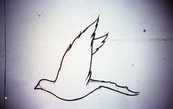|
Build on what you have learned from taking that step. Every time you act, reality changes. If you pay attention, you learn something from taking a smart step. More often than not, it gets you close to what you want. (“I should be able to afford something just outside of downtown.”) Sometimes what you want changes.
In other words, when facing the unknown, act your way into the future that you desire; don’t think your way into it. Thinking does not change reality, nor does it necessarily lead to any learning. You can think all day about starting your businesst, but thinking alone is not going to get you any closer to having one. Just Start: Take Action, Embrace Uncertainty, Create the Future by Leonard A. Schlesinger, Charles F. Kiefer First, it is essential to build into the creative process an initial period that is open-ended. You give yourself time to dream and wander, to start out in a loose and unfocused manner. In this period, you allow the project to associate itself with certain powerful emotions, ones that naturally come out of you as you focus on your ideas. It is always easy to tighten up your ideas later on, and to make your project increasingly realistic and rational. But if you begin with a feeling of tightness and pressure, focusing on the funding, the competition, or people’s opinions, you will stifle the associative powers of the brain and quickly turn the work into something without joy or life.
Second, it is best to have wide knowledge of your field and other fields, giving your brain more possible associations and connections. Third, to keep this process alive, you must never settle into complacency, as if your initial vision represents the endpoint. You must cultivate profound dissatisfaction with your work and the need to constantly improve your ideas, along with a sense of uncertainty—you are not exactly sure where to go next, and this uncertainty drives the creative urge and keeps it fresh. Any kind of resistance or obstacle that crosses your path should be seen as yet another chance to improve your work. Finally, you must come to embrace slowness as a virtue in itself. When it comes to creative endeavors, time is always relative. Mastery by Robert Greene This opportunistic bent of the human mind is the source and foundation of our creative powers6/26/2013
The animal world can be divided into two types—specialists and opportunists. Specialists, like hawks or eagles, have one dominant skill upon which they depend for their survival. When they are not hunting, they can go into a mode of complete relaxation.
Opportunists, on the other hand, have no particular specialty. They depend instead on their skill to sniff out any kind of opportunity in the environment and seize upon it. They are in states of constant tension and require continual stimulation. We humans are the ultimate opportunists in the animal world, the least specialized of all living creatures. Our entire brain and nervous system is geared toward looking for any kind of opening. This opportunistic bent of the human mind is the source and foundation of our creative powers, and it is in going with this bent of the brain that we maximize these powers. Mastery by Robert Greene In Art & Fear (2001), authors David Bayles and Ted Orland share a very interesting anecdote on the value of volume:
The ceramics teacher announced on opening day that he was dividing the class into two groups. All those on the left side of the studio, he said, would be graded solely on the quantity of work they produced, all those on the right solely on its quality. His procedure was simple: on the final day of class he would bring in his bathroom scales and weigh the work of the “quantity” group: fifty pounds of pots rated an A, forty pounds a B, and so on. Those being graded on “quality,” however, needed to produce only one pot—albeit a perfect one—to get an A. Well, come grading time a curious fact emerged: the works of highest quality were all produced by the group being graded for quantity. It seems that while the “quantity” group was busily churning out piles of work and learning from their mistakes, the “quality” group had sat theorizing about perfection, and in the end had little more to show for their efforts than grandiose theories and a pile of dead clay. Skill is the result of deliberate, consistent practice, and in early-stage practice, quantity and speed trump absolute quality. The faster and more often you practice, the more rapidly you’ll acquire the skill. Contrary to popular usage, “steep learning curves” are good, not bad. The graph makes it clear why: Steep learning curves indicate a very fast rate of skill acquisition. The steeper the curve, the better you get per unit of time. The First 20 Hours: How to Learn Anything . . . Fast! by Josh Kaufman The grammar of language locks us into certain forms of logic and ways of thinking. As the writer Sidney Hook put it, “When Aristotle drew up his table of categories which to him represented the grammar of existence, he was really projecting the grammar of the Greek language on the cosmos.” Linguists have enumerated the high number of concepts that have no particular word to describe them in the English language. If there are no words for certain concepts, we tend to not think of them. And so language is a tool that is often too tight and constricting, compared to the multilayered powers of intelligence we naturally possess.
According to the great mathematician Jacques Hadamard, most mathematicians think in terms of images, creating a visual equivalent of the theorem they are trying to work out. Michael Faraday was a powerful visual thinker. When he came up with the idea of electromagnetic lines of force, anticipating the field theories of the twentieth century, he saw them literally in his mind’s eye before he wrote about them. The structure of the periodic table came to the chemist Dmitry Mendeleyev in a dream, where he literally saw the elements laid out before his eyes in a visual scheme. The list of great thinkers who relied upon images is enormous, and perhaps the greatest of them all was Albert Einstein, who once wrote, “The words of the language, as they are written or spoken, do not seem to play any role in my mechanism of thought. The psychical entities which seem to serve as elements in thought are certain signs and more or less clear images which can be voluntarily reproduced and combined.” Studies have indicated that synesthesia is far more prevalent among artists and high-level thinkers. Some have speculated that synesthesia represents a high degree of interconnectivity in the brain, which also plays a role in intelligence. Creative people do not simply think in words, but use all of their senses, their entire bodies in the process. They find sense cues that stimulate their thoughts on many levels—whether it be the smell of something strong, or the tactile feel of a rubber ball. What this means is that they are more open to alternative ways of thinking, creating, and sensing the world. They allow themselves a broader range of sense experience. You must expand as well your notion of thinking and creativity beyond the confines of words and intellectualizations. Stimulating your brain and senses from all directions will help unlock your natural creativity and help revive your original mind. Mastery by Robert Greene Every person has a different length of time he or she can work before productivity and efficiency begin to decline—and this length of time can also shift over the course of a day. Keeping track of when energy levels rise and fall will help determine a schedule for alternating between mindful and mindless activities. Once these ebbs and flows are determined, a timer can be used to keep track of, and direct, these shifts to help prevent exhaustion and time-wasting.
Given all this talk of tracking and training, it might sound like you need to be a scientist or an athlete to truly excel at making great creative work. And in a sense you do: any kind of excellence ultimately requires observation, refinement, adaptation, and endurance. Just listen to acclaimed writer Haruki Murakami explaining the self-control he must put forth to complete his work: When I’m in writing mode for a novel, I get up at four a.m. and work for five to six hours. In the afternoon, I run for ten kilometers or swim for fifteen-hundred meters (or do both), then I read a bit and listen to some music. I go to bed at nine p.m. I keep to this routine every day without variation. The repetition itself becomes the important thing; it’s a form of mesmerism. I mesmerize myself to reach a deeper state of mind. But to hold to such repetition for so long—six months to a year—requires a good amount of mental and physical strength. In that sense, writing a long novel is like survival training. Physical strength is as necessary as artistic sensitivity. There’s no executive in the digital era better known for long-term planning than Jeff Bezos, founder and CEO of Amazon. In the early days of the company, when future-thinking was perhaps most important, Bezos would try to keep his schedule completely open on Mondays and Thursdays. Rather than playing catch-up or taking on a typical CEO schedule of back-to-back meetings, Bezos preserved a good chunk of his weekly time just to explore, learn, and think. He would poke around the various Amazon sites and spend time on the stuff he would ordinarily never get to do. As Bezos explained in a WIRED profile, “I wander around and talk to people or set up my own meetings—ones that are not part of the regular calendar.”11 Setting aside this unstructured time to fully invest in inhabiting the present moment—to take the tenor of his team or fully dive into his own thoughts—has no doubt served Bezos well in honing Amazon’s long-term vision. Manage Your Day-to-Day: Build Your Routine, Find Your Focus, and Sharpen Your Creative Mind (The 99U Book Series)) by Jocelyn K. Glei Researchers at Stanford University discovered in the 1970s that one of the best ways to combat negative distractions is simply to embrace positive distractions. In short, we can fight bad distractions with good distractions.
In the Stanford study,7 children were given an option to eat one marshmallow right away, or wait a few minutes and receive two marshmallows. The children who were able to delay their gratification employed positive distraction techniques to be successful. Some children sang; others kicked the table; they simply did whatever they needed to do to get their minds focused on something other than the marshmallows. There are many ways to use positive distraction techniques for more than just resisting marshmallows. Set a timer and race the clock to complete a task. Tie unrelated rewards to accomplishments—get a drink from the break room or log on to social media for three minutes after reaching a milestone. Write down every invading and negatively distracting thought and schedule a ten-minute review session later in the day to focus on these anxieties and lay them to rest. Still, it takes a significant amount of self-control to work in a chaotic environment. Ignoring negative distractions to focus on preferred activities requires energy and mental agility. For his book Willpower, psychologist Roy Baumeister analyzed findings from hundreds of experiments to determine why some people can retain focus for hours, while others can’t. He discovered that self-control is not genetic or fixed, but rather a skill one can develop and improve with practice. Baumeister suggests many strategies for increasing self-control. One of these strategies is to develop a seemingly unrelated habit, such as improving your posture or saying “yes” instead of “yeah” or flossing your teeth every night before bed. This can strengthen your willpower in other areas of your life. Additionally, once the new habit is ingrained and can be completed without much effort or thought, that energy can then be turned to other activities requiring more self-control. Tasks done on autopilot don’t use up our stockpile of energy like tasks that have to be consciously completed. Entertaining activities, such as playing strategic games that require concentration and have rules that change as the game advances, or listening to audio books that require attention to follow along with the plot, can also be used to increase attention. Even simple behaviors like regularly getting a good night’s sleep are shown to improve focus and self-control. Manage Your Day-to-Day: Build Your Routine, Find Your Focus, and Sharpen Your Creative Mind (The 99U Book Series) by Jocelyn K. Glei As you work to free up your mind and give it the power to alter its perspective, remember the following: the emotions we experience at any time have an inordinate influence on how we perceive the world.
If we feel afraid, we tend to see more of the potential dangers in some action. If we feel particularly bold, we tend to ignore the potential risks. What you must do then is not only alter your mental perspective, but reverse your emotional one as well. For instance, if you are experiencing a lot of resistance and setbacks in your work, try to see this as in fact something that is quite positive and productive. These difficulties will make you tougher and more aware of the flaws you need to correct. In physical exercise, resistance is a way to make the body stronger, and it is the same with the mind. Play a similar reversal on good fortune—seeing the potential dangers of becoming soft, addicted to attention, and so forth. These reversals will free up the imagination to see more possibilities, which will affect what you do. If you see setbacks as opportunities, you are more likely to make that a reality. Mastery by Robert Greene When Leonardo da Vinci wanted to create a whole new style of painting, one that was more lifelike and emotional, he engaged in an obsessive study of details. He spent endless hours experimenting with forms of light hitting various geometrical solids, to test how light could alter the appearance of objects. He devoted hundreds of pages in his notebooks to exploring the various gradations of shadows in every possible combination. He gave this same attention to the folds of a gown, the patterns in hair, the various minute changes in the expression of a human face. When we look at his work we are not consciously aware of these efforts on his part, but we feel how much more alive and realistic his paintings are, as if he had captured reality.
The average person does not generally pay attention to what we shall call negative cues, what should have happened but did not. It is our natural tendency to fixate on positive information, to notice only what we can see and hear. In business, the natural tendency is to look at what is already out there in the marketplace and to think of how we can make it better or cheaper. The real trick—the equivalent of seeing the negative cue—is to focus our attention on some need that is not currently being met, on what is absent. This requires more thinking and is harder to conceptualize, but the rewards can be immense if we hit upon this unfulfilled need. One interesting way to begin such a thought process is to look at new and available technology in the world and to imagine how it could be applied in a much different way, meeting a need that we sense exists but that is not overly apparent. If the need is too obvious, others will already be working on it. Mastery by Robert Greene Author Jonathan Franzen takes the temptation of multitasking so seriously that, to write his bestselling novel Freedom, he locked himself away in a sparsely furnished office. As he told Time magazine, he went so far as to strip his vintage laptop of its wireless card and surgically destroy its Ethernet port with superglue and a saw. He then established a cocoon-like environment with earplugs and noise-cancelling headphones.
A little extreme, perhaps, but Franzen demonstrated shrewd insight into human fallibility. Creative minds are highly susceptible to distraction, and our newfound connectivity poses a powerful temptation for all of us to drift off focus. Studies show that the human mind can only truly multitask when it comes to highly automatic behaviors like walking. For activities that really no such thing as multitasking, only task switching—the process of flicking the mind back and forth between different demands. It can feel as though we’re super-efficiently doing two or more things at once. But in fact we’re just doing one thing, then another, then back again, with significantly less skill and accuracy than if we had simply focused on one job at a time. Manage Your Day-to-Day: Build Your Routine, Find Your Focus, and Sharpen Your Creative Mind (The 99U Book Series)by Jocelyn K. Glei |
Click to set custom HTML
Categories
All
Disclosure of Material Connection:
Some of the links in the post above are “affiliate links.” This means if you click on the link and purchase the item, I will receive an affiliate commission. Regardless, I only recommend products or services I use personally and believe will add value to my readers. I am disclosing this in accordance with the Federal Trade Commission’s 16 CFR, Part 255: “Guides Concerning the Use of Endorsements and Testimonials in Advertising.” |
Photos from Wesley Oostvogels, Thomas Leuthard, swanksalot, Robert Scoble, Lord Jim, Pink Sherbet Photography, jonrawlinson, MonsterVinVin, M. Pratter, greybeard39, Stepan Mazurov, deanmeyersnet, Patrick Hoesly, Lord Jim, Dcysiv Moment, fdecomite, h.koppdelaney, Abode of Chaos, pasa47, gagilas, BAMCorp, cmjcool, Abode of Chaos, faith goble, nerdcoregirl, Adrian Fallace Design & Photography, jmussuto, Easternblot, Jeanne Menjoulet & Cie, aguscr, h.koppdelaney, Saad Faruque, ups2006, Unai_Guerra, erokism, MsSaraKelly, Jem Yoshioka, tony.cairns, david drexler, Reckless Dream Photography, Raffaele1950, kevin dooley, weegeebored, Cast a Line, Zach Dischner, Eddi van W., kmardahl, faungg's photo, Alan Light, acme, Evan Courtney, specialoperations, Mustafa Khayat, darkday., Orin Zebest, Robert S. Donovan, disparkys, kennethkonica, aubergene, Nina Matthews Photography, infomatique, Patrick Hoesly, j0sh (www.pixael.com), SmithGreg, brewbooks, tjsander, The photographer known as Obi, Simone Ramella, striatic, jmussuto, m.a.r.c., jfinnirwin, Nina J. G., pellesten, dreamsjung, misselejane, Design&Joy, eeskaatt, Bravo_Zulu_, No To the Bike Parking Tax, Kecko, quinn.anya, pedrosimoes7, tanakawho, visualpanic, Brooke Hoyer, Barnaby, Fountain_Head, tripandtravelblog, geishaboy500, gordontarpley, Rising Damp, Marc Aubin2009, belboo, torbakhopper, JarleR, aakanayev, santiago nicolau, Official U.S. Navy Imagery, chinnian, GS+, andreasivarsson, paulswansen, victoriapeckham, Thomas8047, timsamoff, ConvenienceStoreGourmet, Jrwooley6, DeeAshley, ethermoon, torbakhopper, Mark Ramsay, dustin larimer, shannonkringen, Stf.O, Todd Huffman, B Rosen, Lord Jim, Jolene4ever, Ben K Adams, Clearly Ambiguous, Daniele Zedda, Ryan Vaarsi, MsSaraKelly, icebrkr, jauhari, ajeofj3, jenny downing, Joi, GollyGforce, Andrew from Sydney, Lord Jim, 'Retard' (says University of Missouri), drukelly, Sullivan Ng, jdxyw, infomatique, AlicePopkorn, RAA408, Abode of Chaos, SaMaNTHa NiGhTsKy, as always..., D@LY3D, Angelo González, the sugary smell of springtime!, Marko Milošević, pedrosimoes7, MartialArtsNomad.com, 401(K) 2013, Sigfrid Lundberg, MoneyBlogNewz, NBphotostream, the stag and doe, Jemima G, bablu121, .reid., jared, EastsideRJ, Alex Alvisi, Marie A.-C., geishaboy500, modomatic, starsnostars., Hardleers, Sarah G..., donielle, Danny PiG, bigcityal, || UggBoy♥UggGirl || PHOTO || WORLD || TRAVEL ||, -KOOPS-, seafaringwoman, kingkongirl, Richard Masoner / Cyclelicious, Hans Gotun, gruntzooki, Duru..., Vectorportal, Peter Hellberg, Alexandre Hamada Possi, Santi Siri, Joshua Rappeneker, a little tune, Patricia Mangual, erokism, woodleywonderworks, Philippe Put, Purple Sherbet Photography, Abode of Chaos, greybeard39, swanksalot, greyloch, Omarukai, Marc_Smith, SLPTWRK, Peter Alfred Hess, illum, MarioMancuso, willc2, _titi, Lightsurgery, Rennett Stowe, feverblue, Esteman., Keith Allison, DCist, h.koppdelaney, Mike Deal aka ZoneDancer, Jos Dielis, The Wandering Angel, Nathaniel KS, MsSaraKelly, Frank Lindecke, Kara Allyson, JeremyGeorge, deoman56, gagilas, Xoan Baltar, Luke Lawreszuk, Eric-P, fdecomite, lorenkerns, masochismtango, Adrian Fallace Design & Photography, anarchosyn, -= Bruce Berrien =-, radiant guy, Free Grunge Textures - www.freestock.ca, El Bibliomata, antmoose, Pedro Belleza, Fitsum Belay/iLLIMETER, Nathan O'Nions, denise carbonell, swanksalot, ▓▒░ TORLEY ░▒▓, Marco Gomes, Justin Ornellas, jenni from the block, René Pütsch, eddieq, thombo2, Ben Mortimer Photography, :moolah, ideowl, joaquinuy, wiredforlego, Rafa G. _, derrickcollins, Fishyone1, ben pollard, Admiralspalast Berlin, Georgio, garybirnie.co.uk, fiskfisk, MoreFunkThanYou, xJason.Rogersx, kevin dooley, David Holmes2, Kris Krug, JD Hancock, Images_of_Money, andriux-uk events, Tyfferz, decafinata, jonrawlinson, isado, Lohan Gunaweera, Derek Mindler, Mike "Dakinewavamon" Kline, themostinept, kiwanja, erokism, dktrpepr, Keoni Cabral, denise carbonell, Neal., tonystl, ericmay, Ally Mauro, erokism, Georgie Pauwels, anitakhart, Ivan Zuber, r2hox, Aka Hige, badjonni, striatic, Arry_B, 401(K) 2012, pvera, Lord Jim, Dredrk aka Mr Sky, TerryJohnston, eschipul, wiredforlego, Yuliya Libkina, fabbio, Justin Ruckman, David Boyle, Matthew Oliphant, Keoni Cabral, Thaddeus Maximus, Abode of Chaos, matthias hämmerly, dospaz, LadyDragonflyCC - >;<, CassiusCassini2011, Abode of Chaos, Jorge Luis Perez, infomatique, Mark Gstohl, AliceNWondrlnd, ç嬥x, ssoosay, striatic, NASA Goddard Photo and Video, feverblue, MsSaraKelly, kohlmann.sascha, Vox Efx, country_boy_shane, paularps, Gage Skidmore, HawkinsSteven, Cam Switzer, Arenamontanus, anieto2k, Georgie Pauwels, my camera and me, Lord Jim, nolifebeforecoffee, Joris_Louwes, Kemm 2, VinothChandar, DeeAshley, brewbooks, craigemorsels, Boris Thaser, Poster Boy NYC, ssoosay, guzzphoto, sachac, chefranden, Wanja Photo, Samuel Petersson, onlyart, samsaundersleeds, Ghita Katz Olsen, mcveja, matthewwu88, Victor Bezrukov, JasonLangheine, erokism, vitroid, thethreesisters, charlywkarl, Sharon & Nikki McCutcheon, Ol.v!er [H2vPk], mikecogh, tec_estromberg, noii's, nicholaspaulsmith, Tucker Sherman, Phil Grondin, Cea., Randomthoughtstome, dcobbinau, rafeejewell, pedrosimoes7, lumaxart, marfis75, roland, RLHyde, David Boyle in DC, Sigfrid Lundberg, Thomas Geiregger, Uberto, bgottsab, Conor Lawless, phphoto2010, Steven | Alan, ckaroli, dweekly, AleBonvini, 드림포유, die.tine, MsSaraKelly, equinoxefr, Sarabbit, Abode of Chaos, Galantucci Alessandro, LadyDragonflyCC - >;< - Spring in Michigan!, Alan Gee, Johan Larsson, SoulRider.222, Robert S. Donovan, amslerPIX, cfaobam, Amy L. Riddle, Bladeflyer, Blomstrom, pumpkincat210, Lord Jim, Symic, kevin dooley, pixelthing, Nelson Minar, Fraser Mummery, The Booklight, edenpictures, everyone's idle, betsyweber, h.koppdelaney, ark, Ben Fredericson (xjrlokix), dphiffer, Jeff Kubina, istolethetv, dullhunk, Tambako the Jaguar, fdecomite, The Daily Ornellas, Badruddeen, kevindooley, mnem, Reyes, sadaton, Mary..K, akunamatata, Dennis Vu Photography for Unleashed Media, mitch98000, ganesha.isis, maria j. luque, doneastwest, w00tdew00t, kevindooley, NightFall404, Infrogmation, nandadevieast, darkpatator, Christos Tsoumplekas, sicamp, Hello Turkey Toe, cliff1066™, James Jordan, gailf548, andrew_byrne, infomatique, graphia, -= Bruce Berrien =-, aphrodite-in-nyc, jmussuto, eiko_eiko, Emily Jane Morgan, _Imaji_, kait jarbeau is in love with you, Leeks, h.koppdelaney, paul-simpson.org, Pinti 1, Namlhots, -KOOPS-

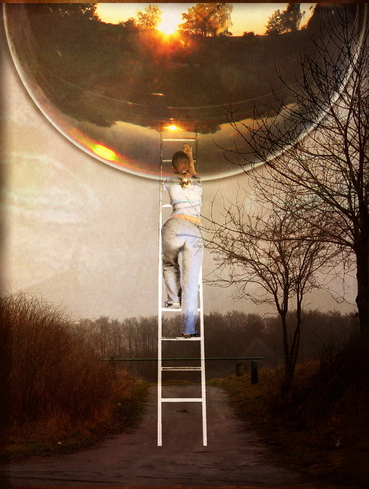

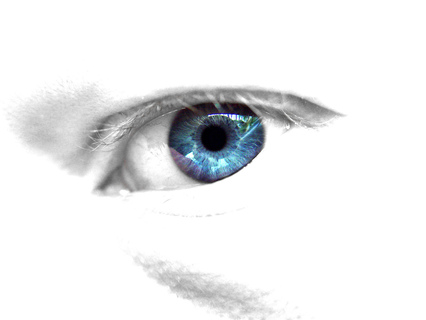
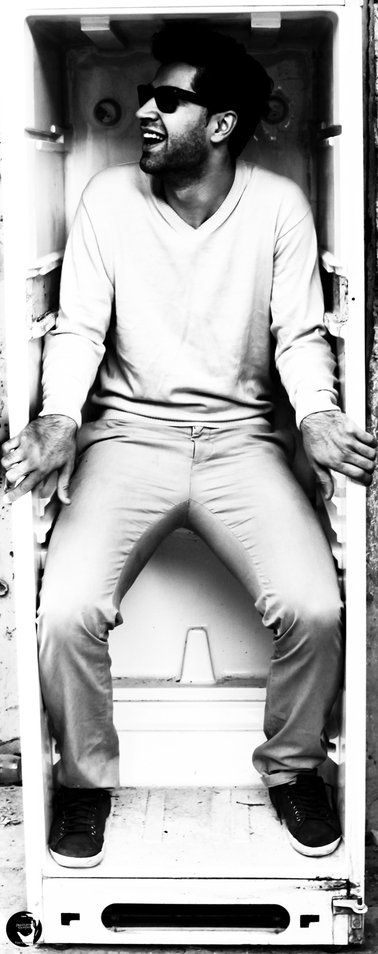



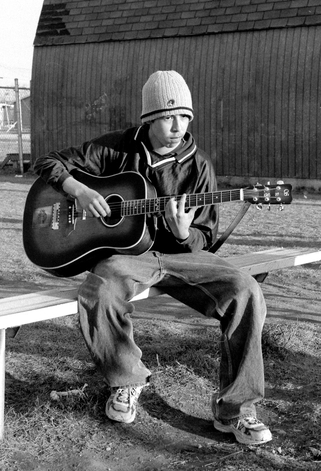

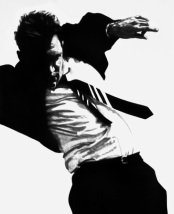
 RSS Feed
RSS Feed
